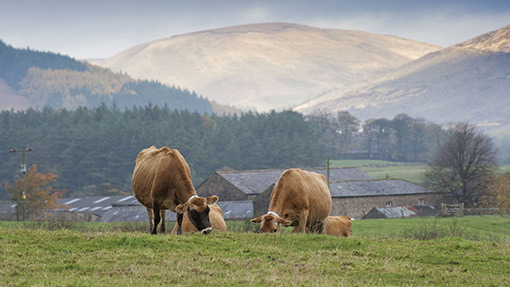Safeguard your herd from Mycoplasma bovis

Mycoplasma bovis is posing a major economic threat to the performance of UK dairy cows. But it is a pathogen that isn’t being actively looked for by vets.
That’s the view of independent nutritionist Colin Orr, who has made a study of the bacteria and developed nutritional strategies to help tackle it in cases where the disease is diagnosed early enough.
“There needs to be a greater awareness of the threat posed by Mycoplasma bovis as the causal element of a range of cow health and production issues,” says Derbyshire-based Mr Orr.
See also: Wake-up call as disease costs dairy farmer £1m
His recent research has revealed potential links between Mycoplasma bovis and cases of copper toxicity in cows, where animals have died of what was assumed to be copper poisoning – even though the feed they were eating was well below the official “safe” limit.
“When the livers of these dead cows were checked they revealed bizarrely high levels of copper in the tissue. So the assumption was that they had been fed excessive copper in the diet.
“I found the feed to contain 26ppm copper – well within the tolerance level – and yet these cows were producing liver tissue that should have been about 200ppm, but was showing 13,000ppm.
“I’m aware of four cases where cows were diagnosed as dying from copper poisoning, but they were on farms where mycoplasma had also been diagnosed.
Mr Orr says there is data concerning some mycoplasma strains that do sequest copper.
“So I’m wondering if Mycoplasma bovis is responsible for taking in copper from the environment and then concentrating it in the liver. It’s only a theory, but I do know of a vet who put it to the test and immediately found Mycoplasma bovis in a cow suffering from copper poisoning.”
His nutrition-based tactic for tackling Mycoplasma bovis – which is a bacterium without a cell wall and is unaffected by antibiotic treatment – aims to “de-starch and de-acidify” the diet. This is to promote good rumen health.
“Affected animals need to be switched to hay or big-bale silage, but certainly smaller quantities of silage to reduce the rapidly fermentable element of the forage intake.
“We want the cows to behave like real ruminants – make them chew and salivate – and we introduce other elements to the diet that will stimulate their own immunity.”
Gareth Perkins of GP Feeds, Cheshire, has been working with Mr Orr and says he has recently been helping dairy farmers in mid-Wales, Cheshire and Shropshire who have been struggling with Mycoplasma bovis.
“We always work closely with the farm vet, but it has to be a vet who has a good understanding of Mycoplasma bovis.
Cumbria dairy farmer Duncan Maughan of Gateshaw Mill, Cumrew, estimates his two-year battle with sick and underperforming cows has cost him £1m (see p8, 22 August Farmers Weekly).
Mycoplasma bovis was finally diagnosed in mid-2013 as the cause of arthritic cows, swollen joints, ulcerated udders, poor fertility and a massive drop in yield.
“This bacterium is probably the biggest health threat UK dairy farmers have had to face and can wipe out big numbers of cows if we don’t get on top of it,” says Mr Maughan.
“Since my experiences have become known I’m getting contacted by more dairy farmers facing the same problems, but who are unaware of the cause.”
‘Early treatment is essential’
Quarantining bought-in stock for several weeks and early treatment are key to reducing the risk from Mycoplasma bovis, says one expert.
Robin Nicholas of the Animal Health and Veterinary Laboratories Agency has been studying mycoplasma bacteria for almost 15 years.
“There’s more awareness now of mycoplasma as a significant cause of chronic respiratory disease and other associated diseases in cattle, such as arthritis and mastitis.
“Mycoplasma bovis is usually brought into a herd by other animals,” says Prof Nicholas. “So if any cattle are being bought in it’s vital a check is made on the health status of the herd they are coming from.”
Prof Nicholas says any areas highly populated by dairy cows are at risk. “The problem is that no one is going to do very much about Mycoplasma bovis if they don’t think they’ve got it. But then they get it, and it is too late.
“Most antibiotic treatments aren’t effective, but screening for mycoplasma isn’t difficult – it’s a simple antibody test. All bought-in stock should be quarantined for several weeks as a routine procedure and not allowed to share air space with existing stock.”
Prof Nicholas says any stock showing signs of respiratory disease should be isolated and treated quickly. “Early treatment is absolutely essential.”
